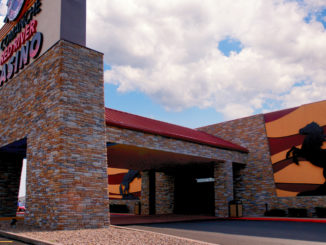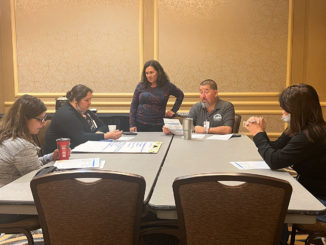A few years ago, an enterprising slot technician figured out a way to set up slot machines to fraudulently load up credits on some slot machines and then recruited some of his fellow team members, including his supervisor, as well as friends and family, to collect those credits without spending a dime of their own money. The gang of eight eventually stole over five million dollars over the course of four years.
In this case, the technology that was supposed to protect casinos from cheating and fraud was used against the casino and allowed the scam to continue on for so long. Most slot manufacturers and end users, and even some surveillance people, will tell you that today’s state of the art slot terminal can’t be beat. I will agree that it is much more difficult to cheat or scam these units than they used to be, but impossible? No way!
Obviously, the fact that a slot technician and his band of first-time criminals were able to do so tells us that it can be done. How the slot tech figured out how to commit the scam, I don’t know. Maybe he was just screwing around and came across an anomaly. Maybe he was looking for a way to beat the unit and just got lucky. At any rate, he figured that out when he connected a wire from the area that recognized coin-in/cash-in to the area of the unit that recorded credits. In this manner, he and his crew of internal fraudsters were able to load as many credits as they desired without inputting any money. The rest of their crew were individuals posing as gamblers who went to the set-up machines and collected the ill-gotten gains! Again, to the tune of over five million dollars.
Additionally, once the credits were collected in the form of a voucher, the techs were able to cover up the crime by initiating a “hard reset” or RAM clear of the machines to wipe out the history of the fake transactions. Wow! All that and a show!
Now, I really don’t know how this scam was finally caught. It could have been detected by an alert surveillance observer who noticed the same people consistently winning and investigated further. Or, as in other such large cases, there was a falling-out amongst the den of thieves, or a violation of Title 31 by one or more of the crew that triggered a federal investigation. Regardless of how it was caught, it is important for us all to realize that it should have been caught much sooner than it was. Please note that I mean no disrespect to anyone involved with the protection of that property. These are not scams that most security and surveillance teams would be aware of or even expect. We are all learning how to transition from spinning cameras to look for traditional cheating tells to using technology to detect the bad guys who are already using technology to beat us.
The good news is that we already have the capability to do so. As we will discuss in our upcoming sessions at the Casino Marketing & Technology Conference on July 12-14, casinos do one thing very well: we track our money and we usually, and should, know who has it.
To detect frauds such as I’ve described, we must use the information we already collect. Doing so will lead us to existing and developing thefts, frauds, cheating, and advantage play regardless of the sophistication or lack thereof of any scam. Let’s use our five-million-dollar internal fraud as an example of how such an activity can be detected.
If, as in this case, money was going out in the form of a voucher, that voucher must be redeemed. To redeem the amounts that must have been obtained to steal as much as they did, they had to have left a trail. In fact, a money trail. As they were using the same four people to collect the vouchers, they had to have stood out at some point as big players. We track such players, or should. My question would be, how are these specific players winning so consistently?
Redeeming at such levels should trigger an entry into the Multiple Transaction Log, or even a requirement that the redeemer be identified as per Title 31. Again, who are these winners and where are they getting our money from and how?
We have other data points that we can look at each day to identify suspicious losses. Consider that the machines used by the team must have shown some type of loss or suspicious play of some kind that would stand out to someone reviewing such data and information, and who could then decide to investigate further. I am confident that once an analyst, auditor, or surveillance investigator looks into the source of the funds redeemed, it would not stand the light of day and what is invisible (the fraudulent transactions) would be made visible.
There are other data and information points that we can use to discover hidden frauds and other crimes. Be sure to stop by our Casino Marketing & Technology Conference sessions and find out how you can protect your property from the frauds being perpetrated in the casinos of today.
Derk Boss is a Raving Partner and also Director of Surveillance for Angel of the Winds Casino Resort.




